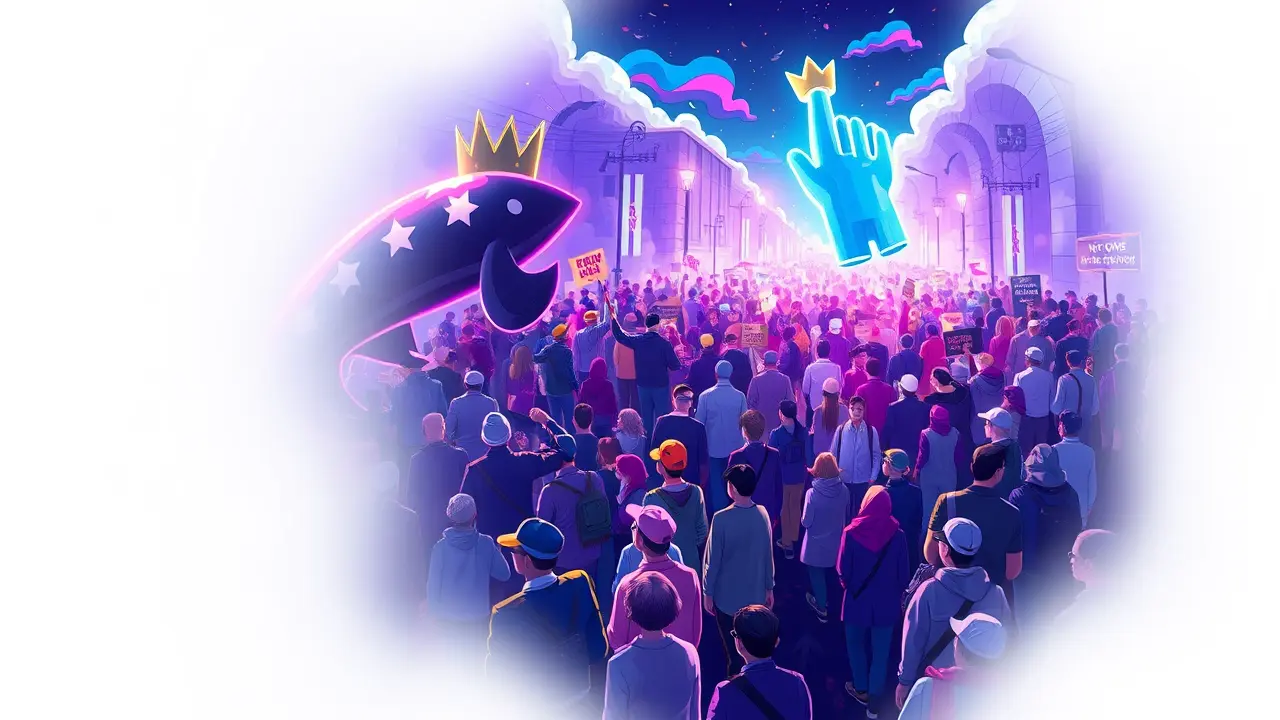Scenes From Saturday's Nationwide ‘No Kings’ Protests
The streets of America erupted in a coordinated symphony of dissent this Saturday, as the sprawling ‘No Kings’ protests unfolded with an intensity and scale that organizers claim mobilized over seven million citizens across an unprecedented 2,700 cities. This was not a mere gathering; it was a national tableau, a visceral response to what participants describe as a creeping authoritarianism that threatens the very bedrock of democratic institutions.The raw numbers alone are staggering, suggesting a grassroots mobilization on a level rarely seen in modern political history, eclipsing even the largest single-day demonstrations of recent memory. But the true story was written in the human tapestry of the crowds—a coalition that defied simple categorization.High-profile politicians, their usual calculated demeanors replaced by genuine fervor, marched shoulder-to-shoulder with A-list celebrities who traded red carpets for pavement, their presence amplifying the message to a global audience. The atmosphere was charged, a potent mix of defiance and communal solidarity, punctuated by the surreal, bobbing forms of creative inflatables that served as both protest art and symbolic effigies of the power structures being challenged.From the sun-baked plazas of Los Angeles to the historic avenues of Boston, the chants of ‘No Kings’ echoed not just as a rejection of a single individual, but as a foundational reclamation of popular sovereignty. This movement, emerging from digital forums and local organizing committees, appears to be a direct descendant of historical struggles against concentrated power, drawing a clear, if unspoken, lineage from the anti-monarchical fervor that birthed the republic itself.Analysts are already scrambling to contextualize the event; Dr. Anya Sharma, a professor of political sociology at Columbia University, noted in a hurried phone interview that 'the diversity of participation is key.It’s not a left-right phenomenon in the traditional sense. It’s a pro-democracy, anti-autocracy front that has managed to crystallize a latent public anxiety into a tangible, physical force.' The logistical mastery behind such a synchronized national action points to a new era of decentralized, yet highly effective, activist coordination, leveraging encrypted apps and social media networks to orchestrate what felt like a spontaneous national uprising. The immediate consequences are already rippling through the political establishment, with several lawmakers announcing revised stances on key legislative items related to executive oversight and electoral integrity. The question now hanging heavy in the air is one of sustainability: can this massive, decentralized energy be channeled into lasting political change, or will it dissipate as a powerful but fleeting moment of catharsis? The protests have undeniably shifted the Overton window, forcing a national conversation about the limits of power and the rights of the citizenry in a way that will resonate far beyond this single Saturday, setting a new precedent for public dissent in the 21st century.
It’s quiet here...Start the conversation by leaving the first comment.
© 2025 Outpoll Service LTD. All rights reserved.
